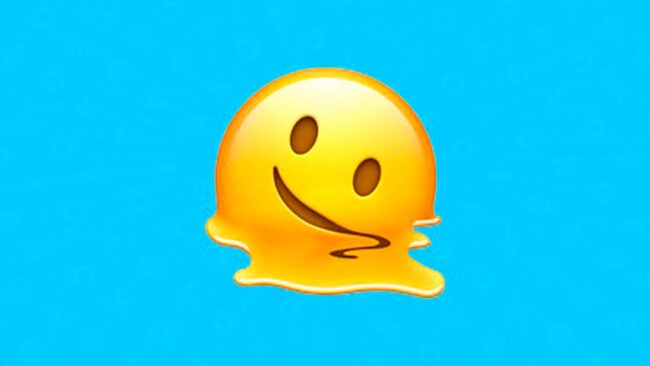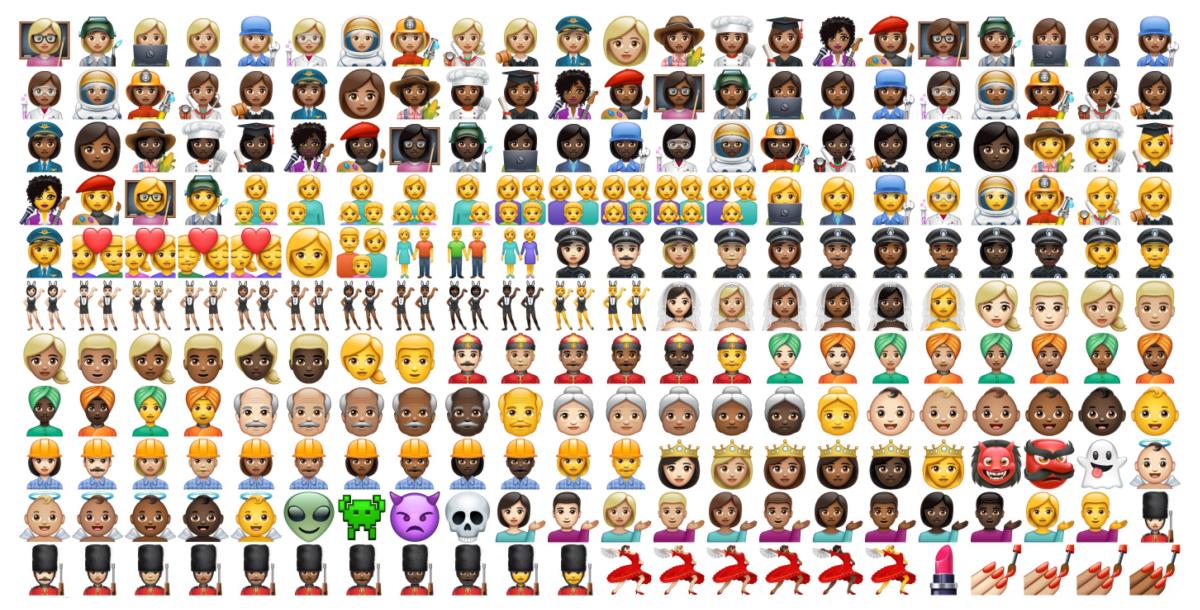In an era where digital communication is ubiquitous, emojis have emerged as a universal language that adds emotion, context, and nuance to text-based
In an era where digital communication is ubiquitous, emojis have emerged as a universal language that adds emotion, context, and nuance to text-based conversations. These small pictographs bridge gaps between cultures, languages, and generations, transforming the way people express themselves online. However, with thousands of emojis available and subtle differences across platforms and cultures, understanding their precise meaning can be challenging. That’s where Emojipedia plays a crucial role.
Emojipedia is the ultimate online resource dedicated to cataloging, explaining, and contextualizing every officially recognized emoji. This article will explore the origins of Emojipedia, its importance, how it works, and why it’s a vital tool in modern communication.
Must visit: tradeinfinite

The Birth and Growth of Emojis
Emojis first appeared in Japan in the late 1990s as simple icons to add emotional expression to otherwise plain digital messages. Since then, emojis have become an integral part of daily communication worldwide, evolving from a few dozen icons to thousands of diverse symbols representing emotions, objects, activities, and concepts.
The Unicode Consortium, a non-profit organization responsible for standardizing text characters across computers and devices, began incorporating emojis into the Unicode Standard in 2010. This move allowed emojis to be consistently recognized and displayed across different platforms, such as Apple, Google, Microsoft, and Samsung.
What is Emojipedia?
Founded in 2013 by Jeremy Burge, Emojipedia is a free online encyclopedia dedicated exclusively to emojis. It serves as an extensive database and dictionary for emojis, offering detailed explanations about their meanings, appearances on different platforms, origins, and usage.
Emojipedia’s main features include:
- Emoji Definitions: Precise descriptions of what each emoji means and how it is commonly used.
- Platform Variations: Visual comparisons of how each emoji looks on various operating systems and social networks.
- History and Updates: Documentation of when each emoji was introduced and changes made over time.
- New Emoji Releases: News and insights about upcoming emojis approved by Unicode.
- Searchable Database: An intuitive search system allowing users to find emojis by name, category, or keyword.
Why Is Emojipedia So Important?
1. Clarifying Emoji Meanings
Not all emojis are straightforward. Many symbols carry multiple meanings or cultural connotations. For example, the “Folded Hands” emoji 🙏 is often interpreted as a prayer gesture in some cultures but can mean “thank you” or “please” in others. Emojipedia helps users understand these nuances.
2. Understanding Platform Differences
An emoji’s appearance can vary widely from one device to another, sometimes altering its perceived tone. For example, the “Grinning Face” 😁 on Apple devices looks very different from the same emoji on Samsung devices. Emojipedia’s side-by-side images help avoid misunderstandings.
3. Tracking Emoji Evolution
Emojipedia documents the ongoing expansion of emojis, including the addition of diverse skin tones, gender-neutral options, and emojis representing disabilities or cultural elements. It highlights how emojis reflect and promote inclusivity.
4. Staying Up-to-Date
Unicode introduces new emojis annually, responding to social trends and user demand. Emojipedia keeps users informed about these changes and explains their significance.
How Does Emojipedia Work?
Alignment with Unicode Standards
Emojipedia works closely with the Unicode Consortium, ensuring its emoji listings and details match the latest Unicode releases. Each emoji on Emojipedia is identified by a unique Unicode code and an official name.
Detailed Emoji Profiles
Every emoji entry on Emojipedia features:
- Unicode Information: The official codepoints and version introduced.
- Visual Representations: Images showing how the emoji appears across platforms (Apple, Google, Microsoft, Samsung, Twitter, WhatsApp, Facebook, etc.).
- Meaning and Usage: Explanations about the emoji’s intended meaning, typical uses, and any common alternate interpretations.
- Variations: Information about available skin tones, genders, and other modifiers.
- Historical Context: Insights about the emoji’s origin, changes in design, or cultural significance.
User Interface
Users can browse emojis by category (e.g., Smileys & Emotion, Animals & Nature, Food & Drink) or search by name or keyword. The site is mobile-friendly and supports pasting emojis directly into the search bar.
Emojipedia and Cultural Representation
Diversity and Inclusion
One of the most significant contributions of Emojipedia is its role in documenting the progress toward more inclusive emoji representation. This includes:
- Skin Tone Modifiers: Introduced in 2015, these allow users to select different skin colors for many emojis.
- Gender Variations: Emojis now include options for male, female, and gender-neutral representations.
- Disability Emojis: Symbols for wheelchair users, hearing aids, prosthetic limbs, and guide dogs promote awareness and inclusivity.
- Cultural Symbols: Emojis representing diverse foods, traditions, and national flags help celebrate global cultures.
Emojipedia acts as a cultural archive for these milestones.
Practical Uses of Emojipedia
For Individuals
Casual users often consult Emojipedia to understand unfamiliar emojis or check if an emoji they want to use has a particular cultural or emotional meaning.
For Marketers and Brands
Businesses use emojis strategically to engage customers and humanize their messaging. Emojipedia helps marketers choose emojis that resonate with their audience and avoid potential missteps.
For App Developers
App developers rely on Emojipedia to stay up-to-date with emoji standards, ensuring proper emoji rendering and support in their software.
For Academics and Researchers
Scholars studying language, communication, or digital culture use Emojipedia as a reliable reference for emoji meanings and usage trends.
Common Emoji Confusions Explained
The “Eggplant” and “Peach” Controversy
While these emojis depict food items, they’ve also become widely used as innuendos in digital conversations. Emojipedia explains both literal and slang meanings to provide full context.
The “Face with Tears of Joy” Debate
The 😂 emoji is often interpreted as laughter but can also be used sarcastically or to mask discomfort. Emojipedia explores such nuanced usage.
Changing Emojis for Sensitivity
For example, the “Pistol” emoji was changed to a water gun by many platforms to reduce violent implications, a shift documented on Emojipedia.
How to Propose a New Emoji
Emojipedia offers a helpful guide for those interested in submitting new emoji proposals to the Unicode Consortium. The process includes:
- Providing a clear and compelling reason for the emoji.
- Showing evidence of expected widespread usage.
- Explaining how the emoji differs from existing ones.
- Submitting a formal proposal according to Unicode’s guidelines.
Emojipedia includes templates and examples of successful proposals to aid users.
The Future of Emojis and Emojipedia
As technology advances, emojis are likely to become more dynamic and personalized. Possible future developments include:
- Animated Emojis: Bringing emojis to life with movement and interactivity.
- Personalized Avatars: Emojis tailored to individual appearance and identity.
- Integration in AR/VR: Using emojis in augmented and virtual reality environments for richer communication.
Emojipedia will continue evolving alongside these innovations, remaining the go-to resource for emoji knowledge.
Frequently Asked Questions (FAQs)
1. What is Emojipedia?
Emojipedia is an online encyclopedia that catalogs every officially approved emoji, explaining their meanings, platform appearances, and history.
2. Who created Emojipedia?
Jeremy Burge created Emojipedia in 2013 and has managed its growth since.
3. How often is Emojipedia updated?
Emojipedia is updated frequently, particularly after new emoji releases from the Unicode Consortium.
4. Why do emojis look different on different devices?
Each platform designs its own version of emojis, leading to visual differences despite consistent underlying meanings.
5. Can I find meanings for all emojis on Emojipedia?
Yes, Emojipedia provides detailed information on every official emoji.
6. How can I suggest a new emoji?
You can submit a proposal to Unicode, with Emojipedia providing guides and templates for this process.
7. Are emojis understood the same way worldwide?
Not always. Meanings can vary by culture and context, but Emojipedia helps clarify these differences.
Conclusion
Emojis have revolutionized how people communicate online, adding emotional depth and visual cues that transcend language barriers. Emojipedia plays an essential role by offering clear, detailed, and up-to-date information about these symbols, ensuring users can communicate effectively and respectfully.
Whether you’re texting friends, crafting marketing campaigns, developing apps, or researching digital culture, Emojipedia is the ultimate emoji resource. As emojis continue to evolve, Emojipedia will remain your trusted guide through the vibrant and ever-changing language of emojis.




COMMENTS